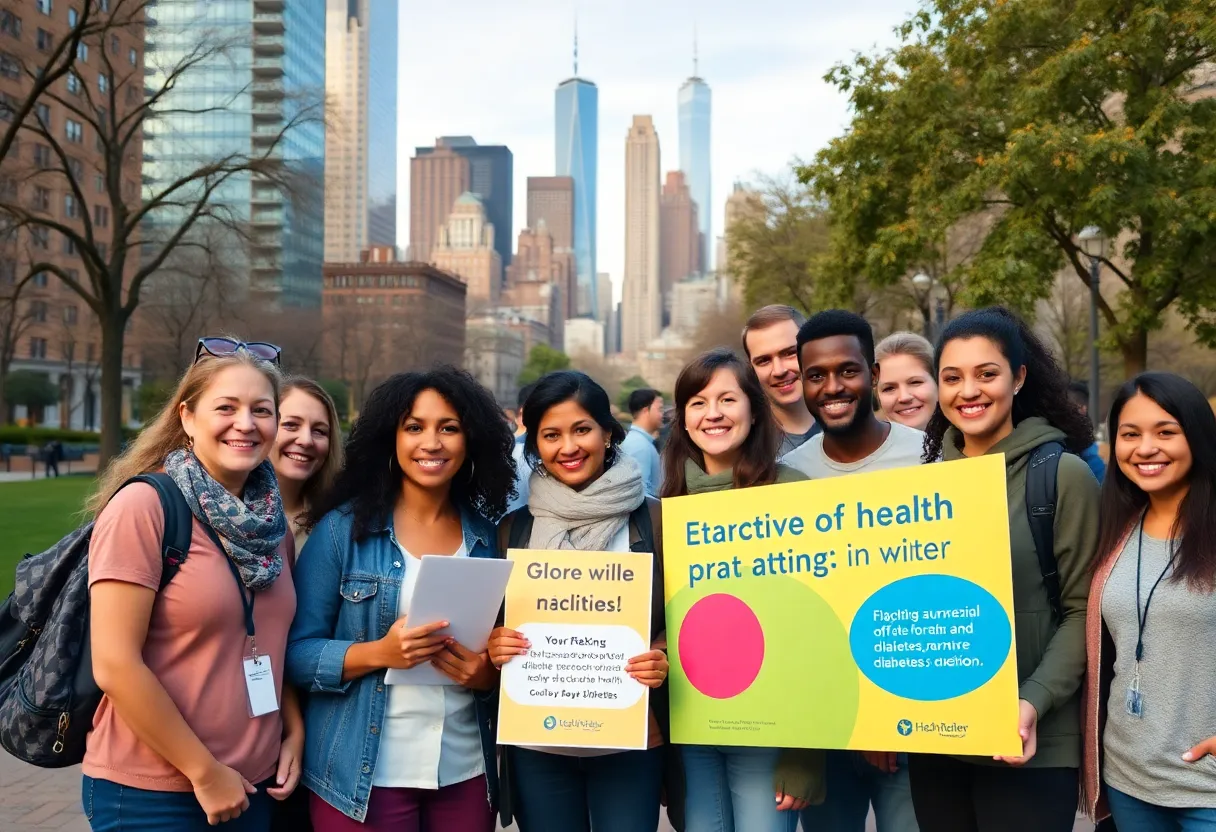News Summary
A recent report reveals that around 11% of adults in New York City live with diabetes, showcasing alarming disparities across racial and ethnic groups, and socioeconomic statuses. The prevalence is higher among Asian, Black, Latino, and low-income residents, with age playing a significant role. The Bronx reports the highest diabetes rates, and systemic issues contribute to health inequities. The Health Department has called for urgent policy actions to address these disparities and improve health outcomes through community-based initiatives.
New York City Reports Significant Diabetes Disparities Among Adults
In 2022, approximately 11% of adults in New York City, which amounts to around 800,000 individuals, were living with diabetes, according to a new report. The findings highlight alarming disparities in diabetes prevalence among different racial and ethnic groups, as well as socioeconomic statuses.
Among racial and ethnic communities, the report reveals that 13% of Asian and Pacific Islander residents, 14% of Black and Latino residents, and 7% of white residents are affected by diabetes. Additionally, diabetes rates are notably higher in low-income neighborhoods, with 15% prevalence in areas of very high poverty in contrast to 8% in low poverty areas.
Age-Related Diabetes Prevalence
The findings also indicate that age plays a significant role in diabetes prevalence. Among adults aged 18-44, the prevalence is 3%, while it increases to 17% for those aged 45-64, and peaks at 26% among adults aged 65 and older.
Borough-Level Disparities
A closer look at diabetes rates by borough shows that the Bronx has the highest prevalence at 15%, followed by Queens and Brooklyn, each reporting 12% of adults living with the condition. This data underscores the geographic inequities that contribute to health disparities within the city.
Racial Inequities in Diabetes-Related Health Outcomes
In addition to the prevalence of diabetes, the report highlights alarming racial inequities in diabetes-related lower extremity amputations. Black individuals experience rates of 63 amputations per 100,000, Latino individuals face rates of 53 per 100,000, while white individuals have a significantly lower rate of 24 per 100,000.
Residents living in very high poverty neighborhoods also experienced a startlingly high rate of amputations at 82 per 100,000, compared to 27 per 100,000 in low poverty areas. Overall, more than 3,100 New Yorkers underwent diabetes-related lower extremity amputations in 2022.
Systemic Issues Behind the Disparities
The NYC Health Department has attributed these disparities to a combination of systemic factors, including disinvestment in marginalized communities, systemic racism, poverty, housing instability, and limited access to adequate nutrition. These barriers have contributed to unequal health outcomes and a growing need for effective interventions.
Calls for Action and Policy Recommendations
The report calls for urgent policy actions to address these existing inequities and promote health equity across New York City. City officials have expressed a commitment to implementing a citywide diabetes reduction plan alongside the “HealthyNYC” campaign, which aims to improve health outcomes for all residents.
Looking ahead, key initiatives for 2024 will focus on expanding community diabetes education, supporting primary care providers in early detection of diabetes, and advocating for policy changes to enhance access to necessary resources for diabetes management. Continued investment in comprehensive and community-based prevention, education, and care strategies is essential to improve diabetes management and reduce rates across the population.
Deeper Dive: News & Info About This Topic
HERE Resources
New Gotham Health Clinic to Address Healthcare Disparities in Far Rockaway
Additional Resources
- Harlem World Magazine
- The New York Times
- Gothamist
- Encyclopedia Britannica: Diabetes
- Google Search: Diabetes Management Strategies








